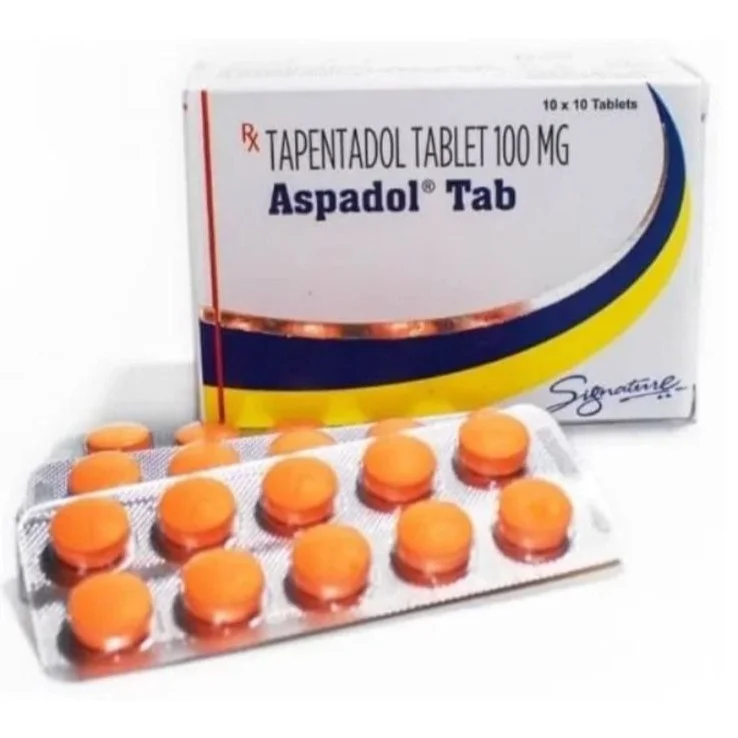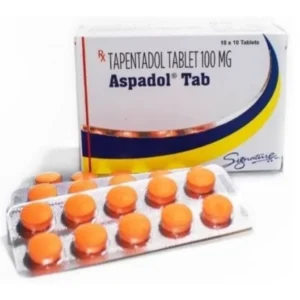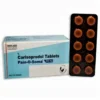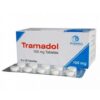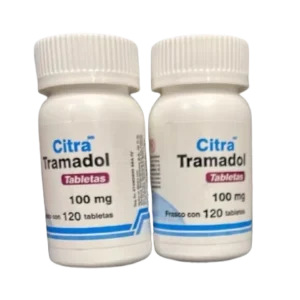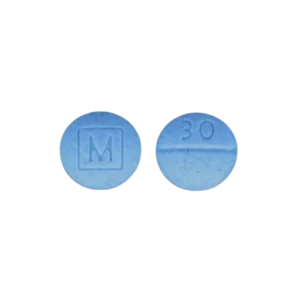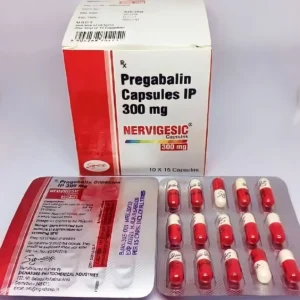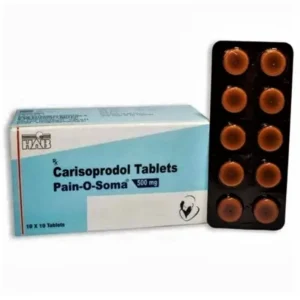Tapentadol 100mg (Nucynta) for Pain Relief: Uses, Dosage, Side Effects, and Precautions:
Tapentadol 100mg (Nucynta) is a powerful prescription medication used to manage moderate to severe pain. It is commonly prescribed for those dealing with conditions like chronic pain, neuropathic pain, and pain after surgery. With its effective pain-relieving properties, Tapentadol has become a reliable option for individuals seeking long-term relief. This article explores what Tapentadol 100mg is, how it works, its uses, side effects, and important precautions to keep in mind.
What is Tapentadol 100mg (Nucynta)?
Tapentadol 100mg, marketed under the brand name Nucynta, is an opioid analgesic designed to relieve pain. It is often prescribed for people who experience chronic pain conditions that other medications can’t effectively manage. Whether it’s the result of injury, surgery, or an ongoing condition like neuropathy, Tapentadol offers a practical solution to improving the quality of life by reducing discomfort.
How Tapentadol 100mg Works
What makes Tapentadol unique is its dual action. It works by binding to opioid receptors in the brain, helping to block the pain signals sent from your body. But it doesn’t stop there. Tapentadol also boosts the activity of norepinephrine, a neurotransmitter involved in pain regulation. This combination makes Tapentadol an effective medication for various pain types, particularly when other options have proven insufficient.
This dual mechanism of action makes Tapentadol a go-to choice for managing both nociceptive and neuropathic pain, offering relief from conditions like:
-
Osteoarthritis
-
Chronic back pain
-
Diabetic neuropathy
-
Post-surgical pain
By addressing pain from multiple angles, Tapentadol ensures a comprehensive and effective approach.
What Are the Common Uses of Tapentadol 100mg?
Tapentadol 100mg is most commonly used for:
-
Chronic Pain: This includes pain from long-term conditions such as osteoarthritis, fibromyalgia, and lower back pain. Tapentadol helps patients manage their pain and regain function in daily life.
-
Neuropathic Pain: This type of pain occurs when the nerves themselves are damaged. Tapentadol is effective for treating conditions like diabetic neuropathy and postherpetic neuralgia, which causes burning or stabbing pain.
-
Postoperative Pain: After surgery, especially for major operations, Tapentadol is used to control moderate to severe pain, helping patients recover with less discomfort.
In each of these scenarios, Tapentadol provides noticeable relief and can improve the overall quality of life for patients experiencing debilitating pain.
How to Take Tapentadol 100mg
For most adults, Tapentadol 100mg is taken every 4 to 6 hours as needed for pain. It’s crucial to follow the exact dosage instructions given by your doctor, as exceeding the recommended amount can lead to serious side effects, including respiratory depression.
Here’s a simple breakdown of how to take Tapentadol:
-
Start with 50mg or 100mg: Your doctor will likely begin you on a low dose to minimize the risk of side effects.
-
Do not exceed 500mg per day: For your safety, Tapentadol should not be taken in amounts higher than 500mg daily.
-
Take with or without food: You can take Tapentadol with food if you are concerned about stomach upset. However, taking it on an empty stomach is fine as well.
Avoid crushing or chewing the tablets, as this can cause a dangerous spike in the medication’s effects.
Side Effects of Tapentadol 100mg
Like all medications, Tapentadol 100mg may cause some side effects. These are typically mild and can be managed by adjusting the dosage. Some common side effects include:
-
Nausea
-
Dizziness or lightheadedness
-
Headache
-
Constipation
-
Drowsiness or fatigue
While these side effects may be bothersome, they usually subside as your body adjusts to the medication. However, more severe side effects can occur in rare cases, including:
-
Difficulty breathing or slow breathing
-
Severe allergic reactions, including swelling and rash
-
Seizures
-
Abnormal heartbeat
If you experience any of these severe symptoms, seek medical attention immediately. The benefits of Tapentadol often outweigh the risks, but it’s important to stay alert to your body’s response, especially when starting a new medication.
Important Precautions and Warnings
Before starting Tapentadol, there are some key precautions to consider:
-
History of Drug Abuse: Tapentadol, like other opioids, carries a risk of addiction. Those with a history of substance abuse should discuss this with their doctor before starting the medication.
-
Liver or Kidney Problems: Tapentadol is processed in the liver and kidneys. If you have a liver or kidney disorder, your doctor may need to adjust the dosage to avoid complications.
-
Respiratory Issues: If you suffer from asthma, chronic obstructive pulmonary disease (COPD), or other respiratory conditions, Tapentadol may cause breathing problems. Always consult your doctor if you have a history of breathing difficulties.
-
Pregnancy and Breastfeeding: Tapentadol should only be used during pregnancy if absolutely necessary, as it can pass into breast milk and harm a nursing infant. Discuss the risks and benefits with your doctor.
Drug Interactions with Tapentadol 100mg
Tapentadol can interact with other medications, leading to potential dangers. Some important interactions include:
-
Benzodiazepines (e.g., lorazepam, diazepam): These medications, used for anxiety or sleep disorders, can increase the sedative effects of Tapentadol, leading to life-threatening respiratory depression.
-
Antidepressants: Combining Tapentadol with serotonin-related drugs (e.g., SSRIs, SNRIs) can lead to serotonin syndrome, a serious condition that affects the nervous system.
-
Alcohol: Drinking alcohol while taking Tapentadol increases the risk of severe side effects, including sedation and respiratory issues.
Always inform your healthcare provider of any other medications or supplements you are taking.
Is Tapentadol 100mg Right for You?
For many patients, Tapentadol 100mg is a game-changer in managing severe pain. It works by targeting the pain at two different levels, making it a potent option for various pain types. However, due to the potential for misuse and side effects, it is essential to use Tapentadol only under the strict supervision of a doctor. If you are concerned about taking an opioid medication, talk to your doctor about other pain management options that may be available.
Conclusion
Tapentadol 100mg (Nucynta) offers significant relief from moderate to severe pain, making it a trusted option for individuals dealing with chronic conditions, neuropathic pain, or post-surgical discomfort. While the medication provides excellent pain relief, it must be used carefully due to the potential for addiction and side effects. Always follow your doctor’s instructions closely to ensure the best results and minimize risks.
By understanding how Tapentadol works, how to take it, and its potential side effects, you can make an informed decision about whether this medication is right for your pain management needs. If you have concerns or questions, don’t hesitate to reach out to your healthcare provider.

